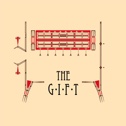Click the logo to go to
The Gift homepage
Crying for a Vision
Tyon et al. stated that this rite “is very old. It is very wakan. It should be undertaken before attempting to do anything of great importance.” Black Elk concurred, saying that it was “used long before the coming of our most sacred pipe.”
The core conditions of Hanblecheya are solitude, humbleness, praying, and paying attention. Solitude enhances the opportunity for a woman or man to receive a vision, or message from the spirits. Usually this is achieved through isolation on a remote, elevated location. Once identified, an area large enough for the lamenter to lie down in is symbolically demarcated by placing markers at the four cardinal directions and by clearing the area of vegetation and all other living things.
The lamenter enters this space naked, with a buffalo robe, pipe and tobacco. Over the course of days, without shelter, food or water, the humble lamenter pitifully begs the spirits to assist him in achieving a vision. Using kinship terms, he pleads with them, as relatives, to help him. These ongoing prayers are paused only for respites of rest and for periods of intense, focused attention, during which the lamenter strives to examine and remember all sensory inputs. A message from the spirits can be embodied in anything, even an apparently inconsequential detail.
After receiving a vision, or realizing that one will not be forthcoming, the lamenter returns to the initi and recounts to his mentor, as completely as possible, his experiences. The mentor assists in interpreting them.
Black Elk. Hanblecheyapi: Crying for a Vision. In The Sacred Pipe: Black Elk’s Account of the Seven Rites of the Oglala Sioux (Brown, Joseph E., ed.), 44-66. Norman: University of Oklahoma Press, 1953, 1989.
Tyon, Thomas, William Garnett, Thunder Bear, George Sword and John Blunt Horn. Foundations. In Walker, James R., Lakota Belief and Ritual (DeMallie, Raymond J. and Jahner, Elaine A., eds.), 100-109. Lincoln: University of Nebraska Press, 1980, 1991.
Tyon, Thomas. The Vision Quest is Wakan (Hanbleceyapi Yuwakanpi Kin). In Walker, James R., Lakota Belief and Ritual (DeMallie, Raymond J. and Jahner, Elaine A., eds.), 150-153. Lincoln: University of Nebraska Press, 1980, 1991.
Curriculum
